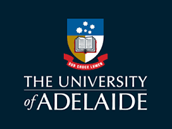
- What's On
-
Research
- Using the State Library Catalogue
- Ask Us
- Browse eResources - online newspapers + more
- Access eResources
- Browse our Research Guides
- Indigenous collection and services
- Order a copy or permission to publish
- Copyright and our collection
- Search like a Librarian
- Research Tips for Students
- Searching TROVE
- Inter-library services
- Public Libraries
- Pay an invoice
- Collections
- Stories
- Plan your visit
- About Us
- Give today

Protecting the Hands that Built ‘Australia’s Own Car’
- Date
- Tuesday 18 March 2025
- Time
- 12 to 1pm
- Location
- Hetzel Lecture Theatre, Institute Building (Ground floor)
- Cost
- Free, bookings essential
- About the presenter
Paul Sendziuk, Associate Professor, Department of Historical and Classical Studies
- Questions?
- For any questions regarding the event, please reach out to the State Library of South Australia:
- Email: slsa.programs@sa.gov.au
Description
General Motors Holden (GMH) frequently asserted that workplace safety was the company’s foremost priority. Yet, in its factories major accidents did occur, and many workers were also exposed to the risk of hearing loss and repetitive strain and posture-related injuries.
Drawing upon oral history interviews with almost 100 former employees who worked at GMH factories between 1945 and 2017, this presentation examines the evolution of GMH’s approach to occupational health and safety, and its workers’ memories of safety culture and the injuries they sustained or witnessed occurring whilst at work.
Image: Slides relating to General Motors-Holden factory at Woodville, approximately 1961-1972. SLSA BRG213_77_84_453

Paul Sendziuk
Paul Sendziuk is a graduate of the University of Western Australia and Monash University. He specialises in Australian History, with particular interests in the histories of immigration, public health, disease, and labour. Paul's doctoral thesis, 'Learning to Trust: A History of Australian Responses to AIDS', was awarded the 2002 Mollie Holman Doctoral Medal. A revised version of this text, published by UNSW Press and University of Washington Press, was short-listed for the Human Rights and Equal Opportunity Commission's 2004 Human Rights Award (non-fiction section).
Paul's current research project, 'People, Places and Promises: Social Histories of Holden in Australia', is a history of General Motors Holden's workers and workplace culture, and the places where Holden's factories were situated. It is a collaboration between the research team (CIs Sendziuk, Jennifer Clark, Alistair Thomson, Graeme Davison, and Carolyn Collins) and General Motors Holden, the National Library of Australia and the National Motor Museum. The team received an Australian Research Council Linkage grant (LP170100860) to conduct the project in 2018-21. So far, outcomes include an exhibition at the National Motor Museum, Holden & Me: Treasures from a Working Life, and an article published in Studies in Oral History.
FAQs
-
How do I get to the State Library by public transport?
-
The 'State Library, Art Gallery, Museum' tram-stop is just outside the State Library. There are bus stops close by, near the War Memorial on North Terrace. The closest train station is the Adelaide city station on North Terrace.
You can plan your journey via Adelaide Metro.
-
Is there car parking near the State Library?
-
The nearest car park is Wilson's Adelaide Central car park, 225 North Terrace, next to David Jones.
There is paid (metered) street parking along Kintore Ave and Victoria Drive.
-
Where is the wheelchair and stroller access?
-
Access to the Spence Wing first floor and the Mortlock Chamber is via the lift in the glass foyer entrance of the library.
There is on-street disabled parking available on the nearby roads. View more information and maps of Adelaide City Council's Disability parking for permit holders.
-
How do I check if the Mortlock Chamber is open when I plan to visit?
-
The Mortlock Chamber may close for private events, check our opening hours for any closure times.
When it is open you can visit the Mortlock Chamber on the ground floor to look at the exhibition bays. The upper levels of the Mortlock Wing include quiet study areas.
-
Is there a cafe at the State Library?
-
Yes, the State Library Cafe is open Monday to Friday from 8am to 4pm and Saturdays from 12 to 4pm.
Find out more about the cafe and resident organisations at the State Library.


